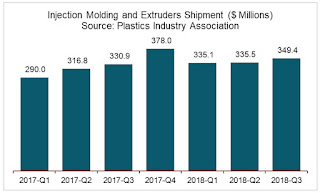Graphene nanotubes make difference in the PVC plastisol industry

Graphene nanotubes are becoming a mainstream conductive additive. This technology is helping to create new business opportunities in various industries, including the PVC plastisol market. Successful market products with graphene nanotubes include ventilation ducting and fiberglass mesh for mining applications, anti-static textiles, and treadmill belts. With their unique properties, graphene nanotubes push PVC plastisol performance higher, to fully satisfy market demand for 105 – 109 Ω/sq resistivity, to preserve a permanent and stable form even after harsh working conditions, to maintain abrasion resistance, and to demonstrate flexibility in the colouring of final products. This all is possible with just 0.25–2 wt.% of graphene nanotube concentrate, recently developed by OCSiAl. New technology is able to eliminate the common friction points in the usage of conventional anti-static additives, such as carbon black or ammonium compounds. Application of carbon blac









